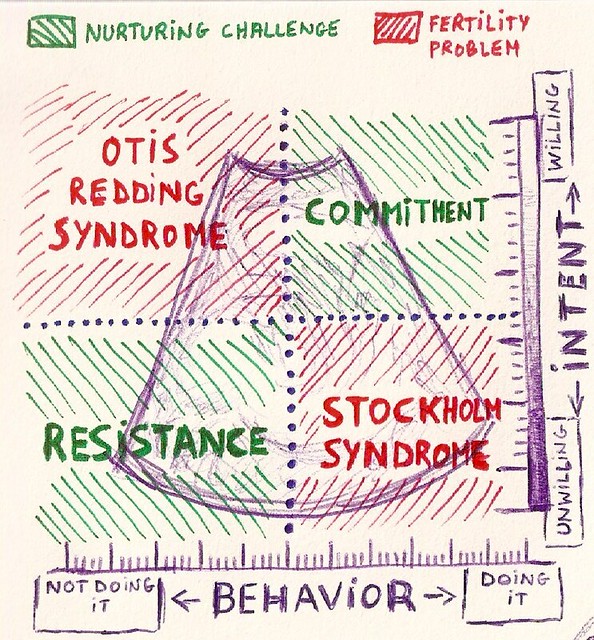As a change practitioner we should sharpen our diagnostic skills for dealing with anger. If we don’t, we will be navigating the project with a defective compass.
Sometimes we mistake anger for resistance, and resistance for commitment. In a project context this often happens when we are close to the delivery date. Deadlines come closer, days at the office are longer, and the tension rises. And in a strange way we seem to have more trouble decoding the messages we receive. Like anger for example.
Remember the resistance pregnancy test we talked about last year? I emphasized the importance of a correct diagnosis by looking at authenticity in the first place and energy level in the second place.

Intent and Behavior can be in sync or out of sync. It’s all a matter of authenticity – something you can easily diagnose by the level of energy that people display. When they are in sync (i.e.: ‘I want what I am doing’; or ‘I don’t do what I dislike’), the behavior is authentic and this generates energy. When they are out of sync (i.e.: ‘I want it, but I am not doing it’; or: ‘I don’t want it and still I am doing it’) the behavior is a coping behavior and it sucks up the energy.
Most of us have trouble with high-energy communications and as a result we try to avoid them. But we should be focusing on inauthentic communications instead, because that’s where the trouble lies. The specific type of anger we encounter at the moment of go-live has nothing to do with aggression, sabotage or inauthenticity. It is an authentic expression of concern, and it resembles the concern we have as parents towards our children.
Therefore, there are two misconceptions we need to take into account:
- This anger is not a blocking factor, because it doesn’t pull any energy away. Instead, it increases te energy level. It communicates that we are dealing with a topic that people really care about. In other words: angry concern is authentic.
- The second misconception that exists around angry concern is that it is resistance. In other words, that it should be categorized in the lower left-hand quadrant of our model. This isn’t true either, because this is where we mistake high energy for negative energy. In other words: angry concern is a form of commitment.
Think about this distinction the next time you meet people who are very vocal about your project. It matters to them. Sharpen your diagnostic skills for the resistance pregnancy test and make sure that you honor the courage that people display in expressing their concern. Their anger is an ultimate expression of commitment. Honoring this expression is what brings us closer to the tipping point of social architecture.

